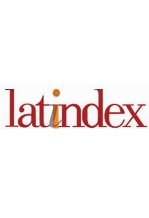A DINÂMICA PÓS-KEYNESIANA DA TAXA DE CÂMBIO BRASILEIRA: UM ESTUDO SOBRE A APLICABILIDADE DO MODELO MENTAL NO BRASIL ENTRE 2001 E 2018
Keywords:
Expectativas, Abordagem Pós-keynesiana, Taxa de Câmbio, Modelo MentalAbstract
The following study aims to verify the applicability of the mental model to explain the dynamics of the exchange rate in Brazil from 2001 to 2018. The mental model was developed in 2009 by the American economist Jhon Harvey, to map and structure the expectations of the agents facing the foreign exchange market, which according to him corresponds to a relevant element in the determination and dynamics of the exchange rate. Therefore, the methodology used in this research consists in the application of the mental model, with the aid of descriptive statistics and simple comparative calculation. The results obtained in this study indicate that the post-Keynesian theory has a relevant relationship with the dynamics of the Brazilian nominal exchange rate. However, the same results make the precise statement about the applicability of the mental model to the Brazilian economy unfeasible, given that some of the variables identified as determinants, did not have a great influence on the nominal exchange rate in part of the studied period.
Downloads
References
AMADO, A. Controle de capitais e instabilidade financeira: uma abordagem pós-keynesiana. In: SICSÚ, J. FILHO, F.F. Câmbio e controles de capitais: avaliando a eficiência de modelos macroeconômicos. Rio de Janeiro: Elsevier, cap. 4, p. 86-104, 2006.
ANDRADE, R.; PRATES, D. M. Dinâmica da taxa de câmbio em uma economia monetária periférica: uma abordagem Keynesiana. Nova Economia, v. 22, p. 235-257, 2012.
BANCO CENTRAL DO BRASIL. Capitais Internacionais e Mercado de Câmbio no Brasil. BCB: Brasília. Outubro, p.1-5, 2015. Disponível em: https://www.bcb.gov.br/content/estabilidadefinanceira/Documents/Politica%20cambial/texto_tecnico/Capitais_Internacionais_Mercado_Cambio_Brasil.pdf.
_______________. O mercado de câmbio brasileiro e o desenvolvimento do mercado de derivativos cambiais. Estudo Especial: Brasília, nº 41, p.1-7, 2018. Disponível em: < https://www.bcb.gov.br/conteudo/relatorioinflacao/EstudosEspeciais/EE41_O_mercado_de_cambio_brasileiro_e_o_desenvolvimento_do_mercado_de_derivativos_cambiais.pdf>.
BASTOS, E. K.X; FONTES, P. V. da S.; Mercado de câmbio brasileiro, intervenções do banco central e controles de capitais de 1999 a 2012. Brasília, 2014. Disponível em: http://www.ipea.gov.br/portal/images/stories/PDFs/TDs/td_1934.pdf
BELLUZZO, L.G. Assimetrias do sistema monetário. Valor Econômico, 2018. Disponível em: https://www.pressreader.com/brazil/valorecon%C3%B4mico/20180904/281758450168338.
CARNEIRO, R. M. Globalização financeira e inserção periférica. Economia e Sociedade, Campinas, n. 13, p.58-92, 1999.
DAVIDSON, P. Post keynesian macroeconomic theory. Aldershot: Edward Elgar, 1994.
DEQUECH, D. Incerteza Num Sentido Forte: Significado e Fontes. In: LIMA, G. T.; SICSÚ, J.; PAULA, L. F. de. (Org.). Macroeconomia Moderna: Keynes e a Economia Contemporânea. Rio de Janeiro: Campus, 1999.
DORNBUSCH, R. Expectations and exchange rate dynamics. Journal of Political Economy, University of Chicago, v. 84, n. 6, p. 1161-1176, 1976.
FAZANO, R. G. Dinâmica da Taxa de Câmbio: uma interpretação pós-keynesiana da experiência brasileira no período 1999 a 2012. Dissertação (Mestrado em Economia) - Universidade Federal De Uberlândia, Uberlândia- MG, 2013.
FILHO, F. F; ARAUJO, J, P de. Caos, incerteza e teoria pós-keynesiana. Ensaios FEE, Porto Alegre, v.21, n.2, p. 163-182, 2000.
FRITZ, B.; PAULA, L. F.; PRATES, D. M. Hierarquia de moedas e redução da autonomia de política econômica em economias periféricas emergentes: uma análise Keynesiano-estruturalista. In: FERRARI-FILHO, F.; TERRA F. H. B. (Org.). Keynes: Ensaios sobre os 80 Anos da Teoria Geral. Porto Alegre, Brasil: Tomo, pp. 177-202, 2016. Disponível em: http://www.luizfernandodepaula.com.br/ups/hierarquia-de-moedas-e-reducao-da-autonomia-de-politica-economica.pdf
HARVEY, J. T. Exchange rates: Volatility and misalignment in the post-Bretton Woods Era. In: DEPREZ, J.; HARVEY, J. T. (Eds.). Foundations of International Economics: Post Keynesian perspectives. London: Routledge, cap. 8, 1999.
___________. Post keynesian versus neoclassical explanations of exchange rate movements: a short look at the long run. Journal of Post Keynesian Economics, v. 28, n. 2, 2005.
____________. Currency market participants' mental model and the collapse of the dollar: 20012008. Journal of Economic Issues, v. 43, n. 4, 2009.
_____________. Currencies, capital flows and crises – A post keynesian analysis of exchange rate determination. Nova York: Routledge, 2009a.
KALTENBRUNNER, A. Currency internationalization and exchange rate dynamics in emerging markets: a post Keynesian analysis of Brazil. PhD Thesis, Department of Economics School of Oriental and African Studies - SOAS, University of London, 2011.
KEYNES, J.M. The general theory and after: defense and development. London: Macmillan. The collected writings of John Maynard Keynes. v.14, 1973c.
____________. A teoria geral do emprego, dos juros e da moeda. 1. Ed. São Paulo: Atlas, 1982.
LUCARELL, S. Towards a post-keynesian exchange rate modeling. Università di Bergamo, S/N. Disponível em: http://wwwdata.unibg.it/dati/corsi/910003/51123-IME%20fourth%20week%20(Prof.%20Lucarelli%20Lectures%207%20and%208).pdf.
MORAES, L. A de. Taxa de câmbio: uma abordagem integrada: teoria e história econômica. Dissertação (Mestrado em Economia) – Universidade Estadual Paulista, Faculdade de Ciências e Letras, Araraquara- SP, 2012.
PRATES, D. M. Crises financeiras nos países “emergentes”: uma interpretação heterodoxa. Tese (Doutorado) –Universidade Estadual de Campinas. Instituto de Economia, Campinas- SP, 2002.
_____________. O regime cambial brasileiro de 1999 a 2008. CEPAL, Textos para Discussão nº 12, 2010.
_____________. O regime de câmbio flutuante no Brasil: 1999 – 2012: especificidades e dilemas. Brasília: IPEA, 2015. Disponível em: < http://repositorio.ipea.gov.br/bitstream/11058/3901/1/O%20regime%20de%20c%C3%A2mbio%20flutuante%20no%20Brasil_1999-2012.pdf>.
ROSSI, P. L. O mercado internacional de moedas, o carry trade e as taxas de câmbio. Observatório da Economia Global, n. 5, outubro, 2010.
__________. Taxa de câmbio no Brasil: dinâmicas da especulação e da arbitragem. Tese (Doutorado em economia) - Universidade Estadual de Campinas: Instituto de Economia, Campinas- SP, 2012. Disponível em: http://repositorio.unicamp.br/jspui/handle/REPOSIP/286016.
VASCONCELOS, M. R.; STRACHMAN, E.; FUCIDJI, J. R. O Realismo Crítico e as Controvérsias Metodológicas Contemporâneas em Economia. Estudos Econômicos, São Paulo, Universidade de São Paulo, v. 29, n. 3, p. 415-445, jun./set., (1999).
Downloads
Published
How to Cite
Issue
Section
License
The copyright of papers published in the Revista de Economia Mackenzie belongs to the authors, who grant to the Mackenzie Presbyterian University the exclusive rights to publish the content. Total or partial reproduction is prohibited without due authorization of the Editorial Committee, except when it is previously authorized.










